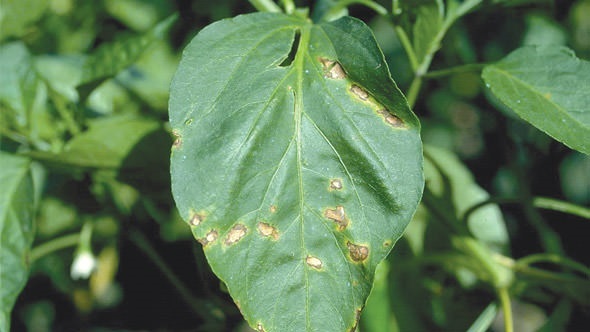Groups Sue To Block Fumigant
Despite the fact that several environmental groups filed a lawsuit to prohibit the use of methyl iodide in California, the manufacturer says the long-awaited fumigant will be available this spring.
The head of business development and regulatory affairs for Arysta LifeScience, Jeff Tweedy, said that the lawsuit filed in late December will have no impact on the roll-out of the product, which carries the trade name Midas. “We stand behind Midas as an important tool for growers,” Tweedy said recently in a telephone call from his North Carolina home.
The California Department of Pesticide Regulation (DPR) announced in early December that the registration of methyl iodide would soon occur. The decision followed the EPA approval of California-specific labels for four methyl iodide products with stringent health-protective measures required by DPR.
Restricted materials require a use permit from the agricultural commissioner in the county where the application is planned. State pesticide laws are enforced by county agricultural commissioners, who can impose tougher restrictions tailored to local conditions.
“Methyl iodide is the most evaluated pesticide in the department’s history,” DPR Director Mary-Ann Warmerdam said in a press release. “Methyl iodide can be used safely under our tough restrictions by only highly trained applicators at times, places, and specific conditions approved by the county agricultural commissioners.”
California’s Strictest In U.S.
California’s use restrictions on methyl iodide are more stringent than those required by EPA, Florida, and other states where it is applied. EPA registered methyl iodide in 2007 as a replacement for methyl bromide, which causes damage to the ozone in the upper atmosphere. Methyl iodide does not harm the ozone layer.
DPR received more than 50,000 public comments after Warmerdam proposed registration of methyl iodide in April. Most of the comments expressed concern about potential health risks from methyl iodide applications.
“We acknowledge there are strong and diverse opinions on methyl iodide registration,” Warmerdam said. “Methyl iodide is a chemical designed to kill pests and soilborne diseases. We based our decision on the risk assessment by our scientists and a risk-management process that determined what measures are required to keep exposures to methyl iodide within safe levels. With these safeguards, methyl iodide can be used without exposing workers and the public to harmful levels.”
Since DPR announced its proposal to register methyl iodide in April, the use restrictions have been clarified and strengthened, including stricter buffer zones, a requirement that only DPR-approved highly retentive tarps be used, more ground water protections, reduced application rates, and stronger protections for workers.
As part of its obligation to continuously evaluate all registered pesticides, DPR also will conduct sampling of water and soil in areas with high methyl iodide use to monitor the effectiveness of the mitigation measures.
Nursery Use Critical
Methyl iodide, also called iodomethane, is licensed for use in 47 other states. Injected into soil before crops are planted, the fumigant spreads through the soil to kill weed seeds, plant diseases and nematodes. It can be applied by drip irrigation under a special protective tarp or injected into the soil using a tractor that automatically places a tarp over the ground after application.
The major uses of methyl iodide in California are to treat soil where strawberries, nursery plants, and fruit and nut trees are to be planted. Since EPA considers methyl iodide a feasible alternative to methyl bromide, the federal agency is expected to approve less methyl bromide for use in the state under provisions of the Montreal Protocol. This treaty is designed to phase out methyl bromide to protect the ozone layer.
The environmental groups, such as Pesticide Action Network of North America, claim in their suit that methyl iodide is dangerous. But Tweedy said it is not some strange chemical. “What they fail to mention is methyl iodide is a naturally produced substance from the ocean,” he said. “They say it would cause irreversible health effects, but that’s just not true, and it’s a disservice to all the good work the environmentalists have done, and the work the state has done.”








